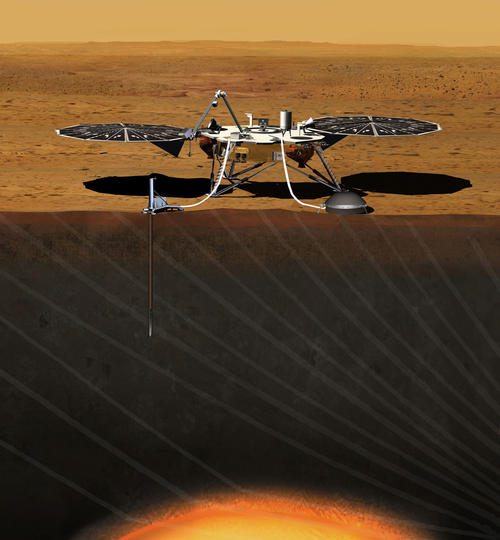NASA has narrowed to four the number of potential landing sites for the agency’s next mission to the surface of Mars, a 2016 lander to study the planet’s interior.
The stationary Interior Exploration Using Seismic Investigations, Geodesy and Heat Transport (InSight) lander is scheduled to launch in March 2016 and land on Mars six months later. It will touch down at one of four sites selected in August from a field of 22 candidates. All four semi-finalist spots lie near each other on an equatorial plain in an area of Mars called Elysium Planitia.

The process of selecting a site for NASA’s next landing on Mars, planned for September 2016, has narrowed to four semifinalist sites located close together in the Elysium Planitia region of Mars. Image credit: NASA.
“We picked four sites that look safest,” said geologist Matt Golombek of NASA’s Jet Propulsion Laboratory in Pasadena, Calif. Golombek is leading the site-selection process for InSight. “They have mostly smooth terrain, few rocks and very little slope.”
Scientists will focus two of NASA’s Mars Reconnaissance Orbiter cameras on the semi-finalists in the coming months to gain data they will use to select the best of the four sites well before InSight is launched.

This artist’s concept depicts the stationary NASA Mars lander known by the acronym InSight at work studying the interior of Mars. Image credit: NASA.
The mission will investigate processes that formed and shaped Mars and will help scientists better understand the evolution of our inner solar system’s rocky planets, including Earth. Unlike previous Mars landings, what is on the surface in the area matters little in the choice of a site except for safety considerations.
“This mission’s science goals are not related to any specific location on Mars because we’re studying the planet as a whole, down to its core,” said Bruce Banerdt, InSight principal investigator at JPL. “Mission safety and survival are what drive our criteria for a landing site.”
Each semifinalist site is an ellipse measuring 81 miles (130 kilometers) from east to west and 17 miles (27 kilometers) from north to south. Engineers calculate the spacecraft will have a 99-percent chance of landing within that ellipse, if targeted for the center.